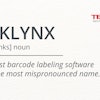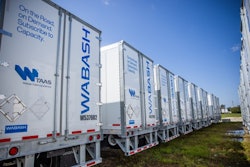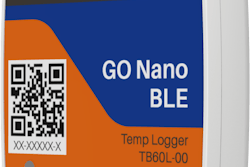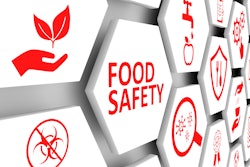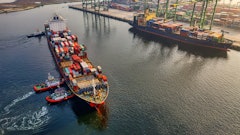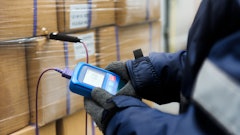
With the complex regulatory landscape regarding sourcing, it is clear the U.S. government expects companies to understand, manage, and oversee their entire supply chain. This can only be done if companies have full knowledge regarding their supply chain, right down to the last sub-supplier. These regulatory expectations make it more important than ever to dig deep to have better visibility into where and from whom raw materials and inputs are being sourced and the path they take to incorporation into finished products.
What is supply chain mapping?
Supply chain mapping is the exercise of examining supply chains to track (i.e., monitor a product’s real time location and status) and trace (i.e., identifying the historical locations of items) the inputs from a company’s suppliers, the company’s suppliers’ sub-suppliers, and so on, all the way back to the raw materials.
The chart below sets forth an example of tracing a food product (here, applesauce) through the production process all the way to product sales at retail. For fulsome supply chain mapping, for each box in the column to the food company’s left in the graphic below, the food company should know each of the following about the entity:
· Name
· Country from which the component originates and that country’s:
o Natural disaster risks
o Regulatory landscape
o Geopolitical risks
o Modern slavery, forced labor, and human trafficking risks
o Economic sanctions risks
o Bribery/corruption risks
· Financial health
· Quality control practices
· Suppliers of each component of the product that the entity makes for the food company
 Foley & Lardner
Foley & Lardner
The food company ideally would make regular site visits to each of those entities to ensure ongoing compliance with applicable law and the food company’s codes of conduct. Alternatively, the food company could flow down such requirements to its suppliers, if it has a reasonable basis to trust its suppliers to conduct good-faith inquiries into compliance with these requirements.
Benefits of supply chain mapping
By mapping its supply chain, a company will have better visibility into the identity of its upstream suppliers, the geographic locations of inputs, and cost structures applied to the product imports, which has a number of immediate and long-term operational and strategic benefits:
· Brand integrity: Supply chain mapping bolsters customer trust in the company’s brand.
· Compliance facilitation: Supply chain mapping enables a company to comply with regulations and respond to regulatory requests. For example:
o The Bioterrorism Act of 2002 and the Food Safety Modernization Act of 2011 requires the traceability of certain food.
o Economic sanctions requirements can apply to indirect sourcing from sanctioned countries, governments, regions, and persons.
o The Uyghur Forced Labor Prevention Act (UFLPA) prohibits the importation of goods that are sourced from, or contains parts and components originating in, the Xinjiang region.
o Customs regulations also prohibit the importation of goods that are the product of forced labor.
· Sustainability: Mapping assists in creating more sustainable products, as increased transparency can promote adherence to ethical practices throughout the production process.
· Disruption prevention: Mapping provides a company with the ability to identify vulnerabilities in the supply chain and develop strategies to mitigate risks associated with supplier reliability, geopolitical issues, or natural disasters.
· Improved operational efficiency: By having detailed knowledge of the supply chain, companies can optimize operations, reduce lead times, and improve inventory management.
· Cost reduction: With better visibility into the supply chain, companies can identify areas where costs can be reduced by optimizing transportation routes or consolidating suppliers.
· Enhanced supplier collaboration: Supply chain mapping fosters better collaboration with suppliers, leading to improved communication, stronger relationships, and mutually beneficial agreements.
· Innovation and product development: Understanding the supply chain can lead to insights that drive innovation, allowing companies to develop new products or improve existing ones more effectively.
· Competitor analysis and benchmarking: Mapping helps companies understand their position in comparison to competitors and identify areas for competitive advantage.
By addressing these aspects, companies can further leverage supply chain mapping for operational and strategic benefits.
How to map a supply chain
Collecting supply chain data is the first step in mapping. This typically requires a company to evaluate its commercial contracts and procurement records to get a list of the products the company purchases. Then, for each product, the company will list its Tier 1 suppliers (i.e., the suppliers the company purchases products from directly).
Once the company has a list of its Tier 1 suppliers, the company can check if its contracts identify who its Tier 2 suppliers are (i.e., from whom the company’s Tier 1 suppliers are purchasing). If this is not listed in the Tier 1 contract, but the contract includes a broad audit right, the company may still be able to track down the Tier 2 suppliers by auditing its Tier 1 suppliers.
Depending on the relationship with the company’s Tier 1 suppliers, these suppliers may also be willing to provide this information to the company without going through a formal audit process.
Repeat the evaluation process up through the company’s supply chain until it gets to the original supplier of raw material(s).
Note that obtaining information from every tier of the supply chain could be difficult due to factors such as confidentiality restrictions, limited transparency from upstream suppliers, and/or the complexity of international supply networks. The process of supply chain mapping can vary in complexity due to industry, length of the supply chain, and number of inputs into the product.
Analyzing the supply chain data
After mapping the supply chain (which may, at this point, look more like a web), the next step is for the company to review and analyze the data it found to find the efficiencies and inefficiencies within its network. For example:
· Determining whether it is relying too heavily a single Tier 1 supplier for a non-custom product. Would it be beneficial to add a second (or third) sourcing option?
· Evaluating its Tier 1 and upstream suppliers’ on-time fill rate. Are these suppliers producing and delivering on-time?
· Analyzing performance for freight and logistics for deliveries. Should it rely on its Tier 1 suppliers to arrange freight, or would the company arranging freight itself provide for quicker delivery or more favorable delivery pricing? Are there inefficiencies in product shipment routes that can be rectified for cost savings?
· Verifying the pricing and costs data it has received from its suppliers is as expected. Is the company being overcharged?
· Comparing countries of origin to regulatory compliance lists. Are there any new countries of origin (or known transshipment points) identified in the mapping process that raise compliance concerns, such as countries at heightened risk of Office of Foreign Assets Control (OFAC) sanctions issues or supply chain integrity issues?
· Inspecting to see if all of one of the company’s critical components are coming from the same geographic region. If a climate event occurs in that region, will it be able to continue to have supply for that component? If not, the company should consider if there is a possibility to qualify another supplier of that component in different region for geographical diversity.
· Analyzing the risk profile of suppliers to anticipate potential disruptions due to economic downturns or other supplier-specific issues. Are any of the suppliers financially unstable or appear to have barriers to performance?
· Evaluating the environmental footprint of the supply chain processes. Are there areas where sustainability can be improved by reducing emissions or waste?
· Assessing the use of technology across the supply chain. Can upgrades or additional technology (such as the Internet of Things (IoT) or artificial intelligence (AI)) increase efficiency or provide better data insights?
· Examining historical data to evaluate demand forecasting accuracy. Can any adjustments be implemented to improve future forecasts?
· Assessing the overall resilience of the supply chain. Can responsiveness to disruptions be quicker? Does the company routinely plan for future contingencies?
Implementing the results of supply chain mapping
In addition, after mapping its supply chain, the company can use its findings as part of its supply chain management operations to:
· Improve operations. Once the mapping information has been collected and analyzed, the organization can:
o identify supply chain risk points;
o implement changes to its sourcing based on inefficiencies or instabilities uncovered in the mapping process;
o ensure compliance with applicable laws; and
o improve response time to supply chain disruptions.
· Update commercial contracts. If mapping a company’s supply chain uncovered issues in its commercial contracts practices or sourcing, such as a supplier not being willing to provide information, relying too heavily on one supplier, or finding that contracts were not in place with its suppliers, it may be time to amend the contracts or put new contracts in place to provide the rights and protections it needs going forward.
Looking to the future: Blockchain
Some companies have begun tracking and tracing products and their inputs with blockchain; although blockchain is typically only helpful where others in the same supply chain are also using blockchain. Several industries have implemented blockchain and have found success in doing so (e.g., the fashion, food and beverage, and pharmaceuticals industries).
Blockchain can be used alongside existing customer and data management systems, and has the ability to bring in data from other participants of a supply chain that a company may not otherwise have access to. For example, the use of blockchain includes time-stamped data showing the course of the manufacturing and delivery process both up and down the supply chain (e.g., the time of receipt of purchase orders to the time goods are loaded on the truck for delivery). Blockchain accordingly not only aids in supply chain mapping; it can also provide the ultimate customer with information relating to companies that the customer may not be in direct contact with.
In addition, blockchain data has immutable and decentralized properties, meaning the data provided by blockchain can be trusted because it is confirmed by a network of inputs rather than just relying on a single source that may lead to inaccuracies.
As a company looks for innovative ways to streamline supply chain mapping in the future, blockchain could be very useful and give quicker and more reliable visibility into where and how a company’s products are being sourced. However, until there is a universal implementation of blockchain for tracing, there is no substitute for working through a comprehensive mapping strategy.
The bottom line on supply chain mapping
Supply chain mapping not only permits a company to achieve better visibility into where its products and inputs are coming from, but also helps it understand whether its supply chain is working efficiently. This will position the company to effectively navigate current challenges and prepare for future disruptions.


